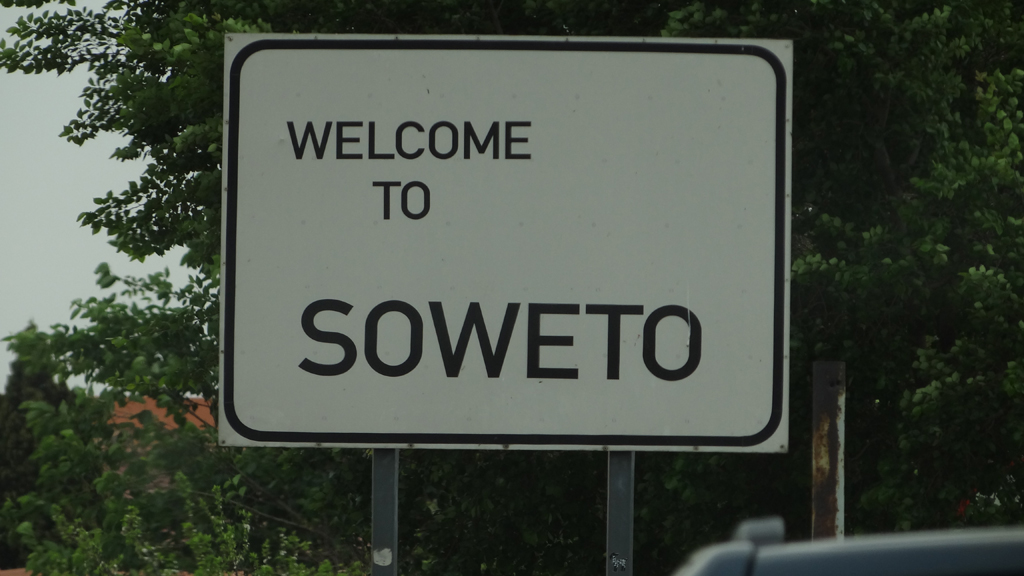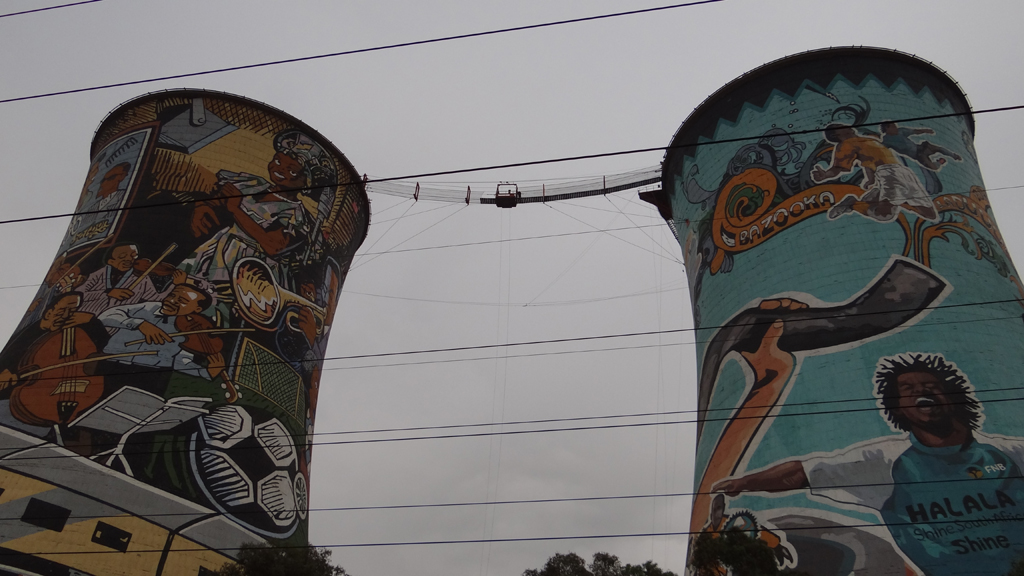If I were to ask you where Soweto got its name, you might answer that it’s probably a name taken from a native South African language. That was my first thought, so I was a bit surprised to learn that Soweto means South Western Townships. It was a cool and cloudy day in September, 2013 when I visited Soweto. Today, the city is part of Johannesburg and consists of 87 separate townships with a population of 1.3 million people. Despite a common belief that the township originated with the policy of apartheid, the area was first settled by migrant workers who arrived following the discovery of gold outside Johannesburg in 1886. A number of policies in subsequent years continued to focus the settlement of non-whites into the townships. After 1948, the pace of settlement increased as non-whites were forcibly removed from Johannesburg. Numerous townships based on language and ethnic background were created to the south and west of Johannesburg.
It was a cool and cloudy day in September, 2013 when I visited Soweto. Today, the city is part of Johannesburg and consists of 87 separate townships with a population of 1.3 million people. Despite a common belief that the township originated with the policy of apartheid, the area was first settled by migrant workers who arrived following the discovery of gold outside Johannesburg in 1886. A number of policies in subsequent years continued to focus the settlement of non-whites into the townships. After 1948, the pace of settlement increased as non-whites were forcibly removed from Johannesburg. Numerous townships based on language and ethnic background were created to the south and west of Johannesburg.
Soweto hit world headlines in 1976 when police fired upon a group of students protesting the government’s decision to educate them in Afrikaans instead of English. Twenty-three people were killed, including 13-year-old Hector Pieterson. A museum dedicated to Pieterson and the uprising was built near the site of the shooting and Pieterson’s sister still works there.

Outside the museum is the iconic photo of a dying Hector Pieterson being carried by 18-year-old Mbuyisa Makhubo with his sister (left) running alongside. The photo became so famous that Makhubo was harassed into leaving South Africa by the security services and was last heard from in 1979. No one knows what became of him. Our guide said some believe he is in Canada.

Around the corner from the Pieterson museum is Vilakazi Street – the only street in the world to have housed two Nobel Peace Prize winners – Desmond Tutu and Nelson Mandela. In 1997, Mandela House was opened to the public and is credited with increasing tourism to Soweto.

Not far from Mandela House is the house where Winnie Mandela still lives.

We waved and drove on.
Soweto is the location of the decommissioned Orlando coal fired plant and the cooling towers are now the site of the largest mural painting in South Africa.

Today, the towers are used for bungee jumping and BASE jumping. It was also the site of a Fast Forward in season 7 of The Amazing Race. The challenge involved crossing the tower opening on a suspension bridge.

Soweto is a city in transition. From time to time we could see the letters K.S.A. spray painted on walls. Our guide told us it stands for Keep Soweto Alive. It’s an initiative undertaken to keep residents in Soweto and improve conditions.

The old Matchbox homes are slowly being replaced with small homes thanks to donations and government initiatives. In many cases, we could see the newer homes with the old huts still in the backyard.

As we were leaving Soweto, our driver stopped to give a commentary on the area but my attention was on three boys who decided to entertain us.
Click to play the video:
Our driver pulled away before we could tip the young men.
Sorry, guys. I would have happily tipped you for your effort!